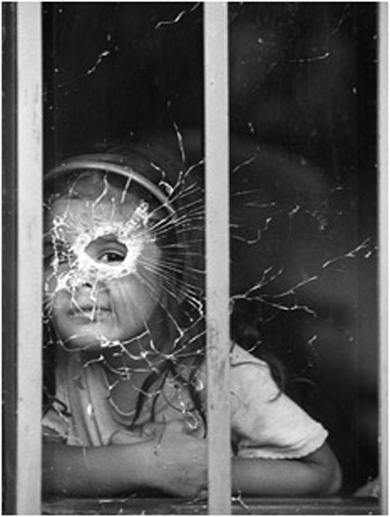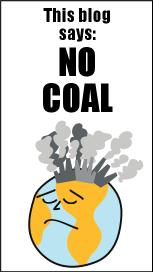
It is Friday in Trujillo, Valle de Cauca and a collection of youths are finishing a week’s work of repairs to the sculptures of their Garden of Memorial. In this small town over 350 have been assassinated or forcefully disappeared in a plague of paramilitary and state violence. Two more disappeared the night before I arrived in the town. There are believed to be many more victims that have not been reported due to fear of reprisals, one relative described it as the “law of silence”. But the victims of Trujillo refuse to let the memory die. Their hillside memorial shouts loudly across the town below. The psychology behind it is as audacious as it is ambitious. The town lies in a mountainous drug trafficking corridor linking the east of the country to the Pacific port of Buenaventura. According to those I spoke to, there exists a powerful local “mafia” of paramilitaries, narco-traffickers, landowners, and local political and armed functionaries. It is common knowledge that the State is working hand in glove with more illicit actors and there are many accounts of the army brigade, based in neighboring Buga, entering the town by jeep at night and rounding up victims.
The town lies in a mountainous drug trafficking corridor linking the east of the country to the Pacific port of Buenaventura. According to those I spoke to, there exists a powerful local “mafia” of paramilitaries, narco-traffickers, landowners, and local political and armed functionaries. It is common knowledge that the State is working hand in glove with more illicit actors and there are many accounts of the army brigade, based in neighboring Buga, entering the town by jeep at night and rounding up victims. Impunity
Impunity
After the massacre carried out by the Colombian Army in 1990, Trujillo became the first Colombian case to be brought before the Inter-American Court of Human Rights. It is becoming increasingly necessary to seek trans-national paths to justice while the state maintains a de facto policy of impunity. The much hated ‘Justice and Peace Law´ offers knock down sentences, releases and special prisons for paramilitary leaders in exchange for the appearance of `demobilization´. The process has been condemned for not meeting international standard on truth, justice, and reparation by countless national and international bodies including Amnesty International.  Concrete sculptures depict the lives and work of the victims below a plaque with their names. Most of the artists are children or relatives of the dead. Many of the tombs are empty (save personal artifacts and gifts) as the victims have either disappeared or mutilated beyond recognition. Ágata was visiting the memorial with her grandaughter. One evening in 1989 her 18 year old son disappeared and they were never able to find a body. Every night she asks herself where he is. Ágata is by no means alone in Colombia, a country which has seen 40,000 political assassinations and over 7,000 forced disappearances since 1980.
Concrete sculptures depict the lives and work of the victims below a plaque with their names. Most of the artists are children or relatives of the dead. Many of the tombs are empty (save personal artifacts and gifts) as the victims have either disappeared or mutilated beyond recognition. Ágata was visiting the memorial with her grandaughter. One evening in 1989 her 18 year old son disappeared and they were never able to find a body. Every night she asks herself where he is. Ágata is by no means alone in Colombia, a country which has seen 40,000 political assassinations and over 7,000 forced disappearances since 1980.
Resistence Towards the back of the garden stands the 7 countries wall; a part circle wall that links up with 7 other walls worldwide to make a whole. Inset to this monument are 7 boxes that once contained artifacts from the respective countries. Paramilitaries have since shot through the glass and taken the items. The mourners see this as proof that the garden presents a threat to their reign of terror.
Towards the back of the garden stands the 7 countries wall; a part circle wall that links up with 7 other walls worldwide to make a whole. Inset to this monument are 7 boxes that once contained artifacts from the respective countries. Paramilitaries have since shot through the glass and taken the items. The mourners see this as proof that the garden presents a threat to their reign of terror.
The late parish priest, Father Tiberio Fernández Mafla, is a heroic and well remembered figure in the town. In his final Sunday service he said “If my blood helps Trujillo to dawn and flower in peace, I will gladly spill it.” By Tuesday he was found dead, beheaded and chopped into several pieces. Chainsaws are a favorite for the “paras”. Another family member told how one victim was made to drink bleach. Methods of torture are brutal and designed to act as social deterrents.

Memorial coordinator Sister Maritze has seen many corpses in her time. She has an inspiring energy and warmth. “We are fighting to keep the memory alive and fighting against the impunity” she exclaimed. In Colombia this is effectively a political act. Perhaps this explains why this short, grey haired nun is having to change e mail accounts for the fourth time because her communications are being intercepted and blocked.
Recording La Memoria
Much of the work of Colombian human rights NGOs is concerned with recording these crimes for posterity, justice and the hope that they will not be repeated. This is the thinking behind the ambitious multi-volume project `Colombia Nunca Mas´ (Colombia Never Again). The books chart the atrocities of the State and paramilitaries between 1965 and 2000 and frame them in their historical and social context. Each 500 plus page volume covers a zone that corresponds to a brigade of the Colombian Army. The crimes of the insurgency are not included because it is the job of the State to investigate these – who otherwise investigates state terror? The latest such project is the Banco de Datos (Data Bank), a regionalized, multi- organisational project to gather and present contemporary breeches of human rights (by all parties) for access on the internet. The reliance on newspaper reports has traditionally proved both incomplete and one sided. All too often the tendency is to act as a mouthpiece for statements from the Army command.
 Frederico coordinates youth arts projects. I met him at the opening of La Galería de Memoria Padre Tiberio Fernández Mafla (The Galery of Memory – named after the mytred priest of Trujillo). Frederico was one of two survivors of a group of 11 who were kidnapped and tortured. His hands bear the scars of being fed into a coffee processing machine. “But well, I go on living“, he smiled “and now with greater purpose and inspiration”. The Gallery is a space for the historical memory of crimes against humanity in South West Colombia. It is sustained by victims and human rights groups. Using artistic expression, testimonies and photos it aims to fight against impunity and for social justice. The psychological and emotional benefit of this is obvious. During the ceremony one of the victims (standing next to a photo of her murdered father) gave a tearful thank you:
Frederico coordinates youth arts projects. I met him at the opening of La Galería de Memoria Padre Tiberio Fernández Mafla (The Galery of Memory – named after the mytred priest of Trujillo). Frederico was one of two survivors of a group of 11 who were kidnapped and tortured. His hands bear the scars of being fed into a coffee processing machine. “But well, I go on living“, he smiled “and now with greater purpose and inspiration”. The Gallery is a space for the historical memory of crimes against humanity in South West Colombia. It is sustained by victims and human rights groups. Using artistic expression, testimonies and photos it aims to fight against impunity and for social justice. The psychological and emotional benefit of this is obvious. During the ceremony one of the victims (standing next to a photo of her murdered father) gave a tearful thank you:“Spaces like this are incredibly important for us so that the memory lives on. We simply cannot carry on in the absence of justice without your solidarity”
 Trujillo´s challenge of resistance for life. digniy and the fight against impunity.
Trujillo´s challenge of resistance for life. digniy and the fight against impunity.Reparación Integral
The aspirations of these brave individuals do not stop with la memoria or even la justicia. They are also demanding integral reparation: psychosocial, political, organizational, economic, environmental and cultural. The National Movement of Victims of State Crimes believes that reparation should reflect the completeness of the harm suffered by the victim. One the one hand it should understand the need of individuals for indemnification and re-adaptation. Conversly, it should assure more general measures of reparation - such as satisfactory guarantees that the atrocities will not be repeated.
These symbolic and artistic edifications of memory amount to a potent dynamic of resistance. Far from being negative and backward looking they are essentially positive, based on concepts of solidarity and hope. By refusing to forget, the victims of South West Colombia are bravely projecting their right to truth, justice and reparation – not just for themselves but for those who have died and those who have still to live.






No hay comentarios:
Publicar un comentario